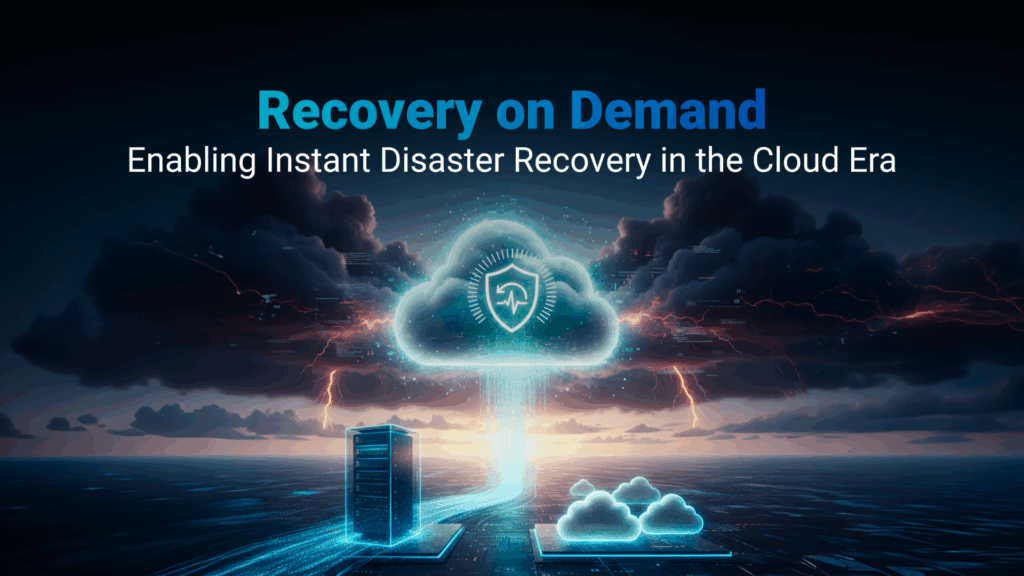
n today’s hyperconnected digital economy, downtime is not an option. Whether due to cyberattacks, hardware failure, or natural disasters, system interruptions can cost enterprises millions in lost revenue and damaged reputation. This is where Recovery on Demand (RoD) steps in—bringing instant disaster recovery capabilities that redefine how organizations protect their critical workloads in the cloud era.
What Is Recovery on Demand?
Recovery on Demand is a cloud-based disaster recovery (DR) solution that allows enterprises to instantly restore their IT systems, data, and applications from the cloud whenever disruptions occur. Unlike traditional DR setups that require physical standby infrastructure, RoD leverages virtualization, automation, and cloud connectivity to enable real-time recovery at scale.
In simple terms: your business operations can resume within minutes, not hours or days.
Why Recovery on Demand Matters in the Cloud Era
As organizations move workloads across multi-cloud and hybrid environments, disaster recovery becomes increasingly complex. Traditional DR methods struggle to keep up with:
- Fragmented infrastructure
- Rising data volumes
- Increasing cyber threats
- Need for cost efficiency and scalability
With Recovery on Demand, businesses gain flexible, scalable, and automated disaster recovery without the high cost of maintaining idle backup environments. You only pay for the resources you use—making it both cost-efficient and operationally agile.
Key Benefits of Recovery on Demand
1. Instant Recovery
Activate recovery environments within minutes. Automation and pre-configured templates ensure systems spin up immediately after an incident.
2. Cloud-Native Scalability
RoD integrates seamlessly with multi-cloud and hybrid infrastructures, allowing enterprises to replicate and restore workloads across regions and providers like AWS, Azure, or Equinix Fabric.
3. Cost Efficiency
No need for dedicated DR sites or idle hardware. Pay only when you activate recovery—transforming disaster recovery from a capital expense to an operational one.
4. Continuous Data Protection
Real-time replication ensures your data is always up to date, minimizing the risk of loss even in sudden outages.
5. Automated Failover and Failback
With orchestrated workflows, systems can failover to the cloud instantly and failback to the primary site once restored—without manual intervention.
How It Works
- Data Replication: Your on-premises or cloud workloads are continuously replicated to a secure cloud environment.
- Automated Orchestration: Predefined recovery policies ensure systems boot in the right sequence.
- Instant Activation: In case of disruption, RoD spins up virtual machines and applications immediately.
- Failback: Once the primary site is stable, workloads can be migrated back seamlessly.
This automation-driven model ensures zero data loss (RPO ≈ 0) and minimal downtime (RTO in minutes)—a huge leap from legacy DR systems.
Use Cases
- Financial services: Maintain 24/7 uptime for mission-critical transactions.
- Telecommunications: Keep global network operations online even during outages.
- E-commerce: Ensure business continuity during traffic surges or infrastructure failure.
- Healthcare: Protect sensitive patient data and maintain compliance.
The Future of Disaster Recovery
As digital transformation accelerates, Recovery on Demand will become the backbone of modern business continuity planning (BCP). With AI-driven orchestration, edge computing integration, and multi-cloud optimization, future DR models will not only recover systems—but anticipate and prevent failures before they happen.
